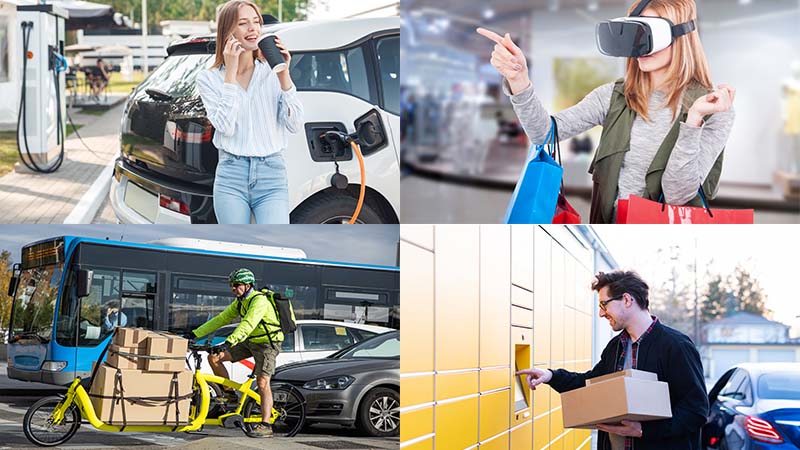What are Mobility Hubs?
There is no agreed definition of at the moment. Broadly speaking a Hub is the co-location of different mobility and mobility-related services and infrastructure. Hubs also play an important role creating an interface between public transport modes and ‘last mile’ delivery services. They are often characterised by a combination of mobility and ‘non-mobility’ resources and services.
There is a general expectation that Mobility Hubs would be a way of implementing local transport and environmental policy, contributing to targets for decarbonisation, reduced car dependency, increased active travel, reduced social exclusion etc.
The Challenge for Local Authorities
Mobility Hubs have potential to be an effective solution for integrating a range of new zero-emission mobility solutions for the movement of both people and goods. But to design and deliver an effective Mobility Hub which will meet the needs of the surrounding area, a number of key questions must be answered:
- What are the site requirements and options?
- What combination of mobility and related services are technically and commercially feasible?
- What are the current (and expected future) gaps and requirements for transport provision?
- What non-mobility related services and infrastructure would bring additional value?
- What is the demand for specific services from private and commercial users?
- What are the key considerations for ensuring long-term commercial sustainability?
- Who are the key stakeholders, what are their requirements, and what can they offer?
It's difficult to know where to start. There is no one-size-fits-all solution. Every Hub will be unique to its location and local plan.
TRL's Approach
At TRL, we take a data-led approach, using proven tools and techniques to inform the design of the right Mobility Hub solution for given use cases, locations, objectives and circumstances. We co-ordinate and co-operate with multiple stakeholders to marry together evidence of:
- Specific local constraints of sites
- Existing transport provision
- User demand including the requirements of private individuals and commercial organisations
- Future transport and economic trends
- The Local Authority’s wider objectives and vision for the area
The TRL Mobility Hubs Design Service
Our consultants will take you through a phased approach to achieve your objectives. We build up to a final set of recommendations in clearly delineated steps that will ensure Local Authorities can realise a concept for a Mobility Hub that will satisfy local and national strategic requirements and be align with all funding parameters.
Step 1: Local context analysis
Collecting evidence on local transport needs and gaps, macroeconomic context & potential business models and designs suitable for given application.
Step 2: Site assessment, Hub format scoping
Producing a list of organisations with interest in Mobility Hub deployment at a given site and generating requirements specification of what they need, and can offer.
Step 3: Predicting user demand
Understanding of early adopter personas, factors driving private user demand, and examples of commercial use cases.
Step 4: Recommendations for Hub design and delivery roadmap
Co-design workshops with key stakeholders to refine Hub design, draft collaboration agreements, & provide roadmap & recommendations for roll out.
This is a fixed price service from TRL for Local Authorities. Please get in touch to discuss your ideas for Mobility Hubs in your region.
Dr George Beard explains more about the service in this video:


